Last year, I was asked if I would like to cook the Christmas main course at my parent’s house in Aberdeenshire. I agreed, packed my whites and my knives, bought some more whites for my wingman brother-in-law, and set about thinking how to produce the best turkey I could (because Mum had ordered turkey). I ‘ummed’ and ‘ahhed’ about this for days. I Googled it, I YouTubed it, and I eventually realised that the best way to cook a turkey is to joint it and deal with the legs and the breast separately.
However, Mum and Dad were not up for me breaking up their expensive turkey, so I did what I could and basted the heck out of it with a proper tonne of butter. Dad commented partway through this procedure that the bird did not need this level of attention, but I do prefer to do something to stop white poultry meat from drying out, and a bacon wrap was not appropriate on this occasion.

So, this year, for the first time in 47 years, Mum and Dad are travelling for Christmas, and they are coming to my house. We will have four adults and one kid, so this is ideal for a goose.
In a bold act of defiance, I am breaking this bird up. I am going to confit the legs, and sous vide the breast. The carcass will be reduced into a stock to create a goosey jus. My triumph will be heralded by a chorus of heavenly trumpets, and the idea of the whole Xmas bird will be laid to rest forever.
However, I am a scientist, and I know that this kind of nonsense needs dry run. So this year we ordered two geese. One was designated ‘Xmas Goose,’ and the other was designated ‘Stunt Goose.’ Stunt Goose would be the testbed for the procedure, so we invited some friends round, and held our culinary nuts as I conducted the method given in the recipe below. I invite you to make it, but if you just want to laugh at it, than that is OK too.
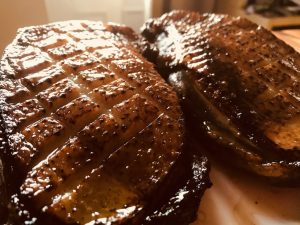
Christmas goose two-ways
Ingredients
- 1 farmed goose (a Greylag or Canadian will not have enough fat for this)
- For the confit:
- 1l goose fat
- 3 springs fresh thyme, leaves picked
- 1 tbsp sea salt
- 2 bay leaves
- 2 garlic cloves, minced
- For the marinade:
- 150ml bilberry or sloe gin
- 1–2 tbsp brown sugar
- 3 tbsp black treacle
- 2 Earl Grey teabags
- 10 juniper berries, crushed
- 1 bay leaf, torn once
- 3 cloves
- For the stock:
- 2 carrots, split and halved
- 1 stick of celery chunked
- 1 onion, halved
- 8 black peppercorns
- 2 bay leaves, torn
- 2 sprigs of thyme
- For the sauce:
- 25g butter, softened
- 25g plain flour
- A handful of blueberries
Instructions
Joint the goose. Start by removing the legs and set aside. Remove the wings and throw them in a stock pot. Carefully remove the wishbone and add it to the wings. Carve off the breasts.
To start the confit, first cure the legs. Put the legs in a bag, and add the herbs, garlic and salt, rubbing liberally over the flesh and skin. Expel as much air as possible from the bag – use a vacuum packer or the water-expulsion method (dip the open bag in water and seal just before the neck of the bag reaches the water). Removing the air prevents oxidation. Place in the fridge overnight.
Put the marinade ingredients in a pan and warm to dissolve the sugar and combine the flavours. Leave to cool and infuse.
Put the goose breasts in a bag, add the marinade, keeping a third back for a sauce, seal the bag and leave in the fridge overnight, turning once.
Prepare your stock by breaking up the remaining goose carcass and putting it in the stock pot with all the other stock ingredients. Add 3–4 litres of water to cover the raw ingredients. Bring to the boil and turn down to a simmer. Cook this for as long as it takes for the flavours to stop developing. This might take most of the day. Sieve the finished stock into a tall 2l jug and chill in the fridge. Once cold, you will be able to skim the solid fat off and discard.
The next day, start your confit by gently melting the goose fat in a large Dutch oven. Preheat an oven to 110˚C. Rinse the cure off the legs with cold water and pat dry. Lower the legs into the fat and ensure they are covered. Cover and place in the oven for 6 hours.
Meanwhile, heat a sous vide rig to 62˚C.
Open the marinade bags and discard the used marinade – it is not safe to use that because it has been in contact with the raw bird and it will have fat in it.
Briefly rinse the marinade off in cold water. Score the breast skin in a diamond pattern. Heat a large dry frying pan on a medium heat and place the breasts in skin side down. Cook until the skin is crispy and the fat is soft and edible, but the flesh is not colouring. This is critical as this is the only opportunity to cook the fat.
Once ready, put the breasts in a vacuum bag, vacuum and seal and cook in the water bath for 3 hours.
To make the sauce, heat the reserved marinade in a pan and add the same volume of goose stock. Reduce until the flavour intensifies. Combine the butter and flour to make a beurre marnie. Star adding this little by little to the simmering sauce until it thickens to just less than you want it. Add the blueberries and cook for about 10 minutes longer. Taste and adjust seasoning and sugar as required. Note that sweetness of a meat sauce if often better achieves using careful addition of a jam or other preserve.
Heat a frying pan, de-bag the breasts and very quickly flash fry them on both sides. Take care not to burn the skin side. Rest the breasts for 10 minutes before carving.
Once cooked, carefully lift the legs out of the fat and shred with two forks as you would a Chinese crispy duck.
Serve with the carved breast slices sitting on top of a small pile of the confit leg. Spoon some of the sauce on the side.
Notes
When we cooked Stunt Goose, we added steamed julienned carrot to the confit, made some roast potatoes (cooked in goose fat, of course), and balanced a split and grilled baby leek on the top.

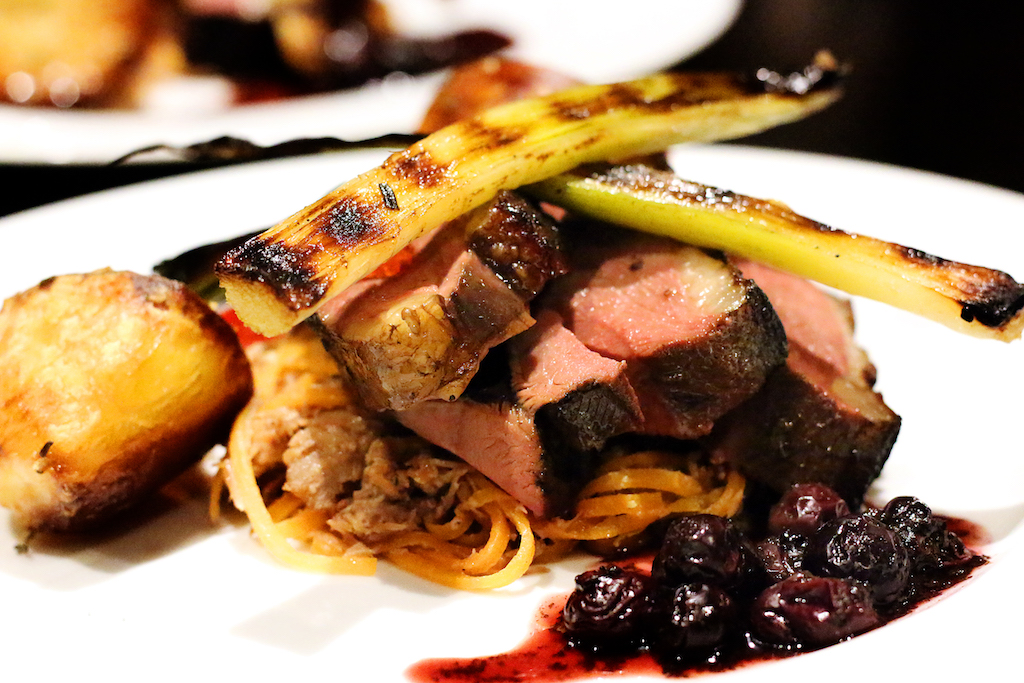

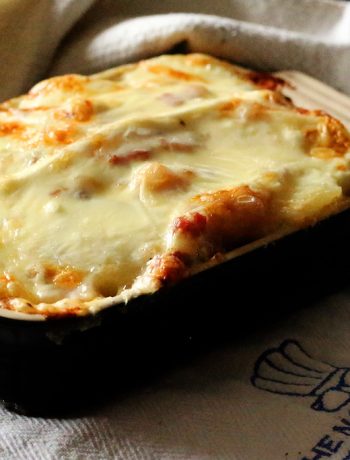
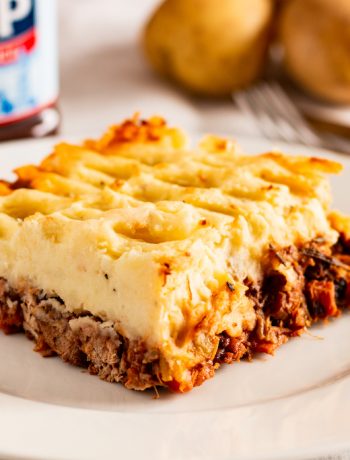
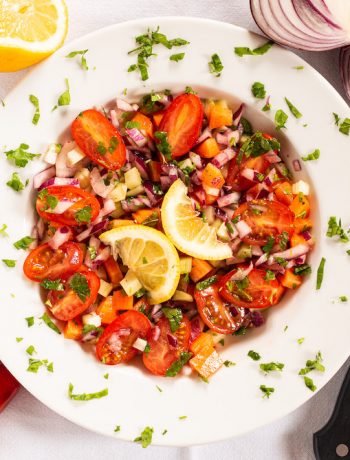
3 Comments
Carl Buckley
31/10/2018 at 11:17 amHi, Nigel, Gonna give this a dry run and if it turns out successfully I’ll serve it on Christmas day. Also trying your venison steak this weekend. Only found your website yesterday. Great recipes,thanks,Carl
Nigel Eastmond
31/10/2018 at 11:45 amThis recipe is super great, but a dry run is a good idea. You need to buy an improbable amount of goose fat, and the gin-cured breast can catch easily.
Constance Grill
30/12/2021 at 4:05 amWell… I don’t know why there is no correspondence since 2018?? I tried this tonight…and while I had to make some improvisations… this recipe is delicious. Because I don’t have sloe gin on hand…. my marinade started with gin which I reduced with some prunes.. I then added a Tablespoon of Pear Balsamic vinegar, the 2 Tablespoons of Blackstrap Molasses..everything else per recipe except I did not have Earl Grey tea. I cooked the thighs per recipe …except started the oven at 450F… and reduced to 275F after 30 min. I used the excess fat from the carcass, and this seemed fine…. cooked the thighs for the recommended time of 6 hrs at about 275F. I deboned the breasts and marinated per recipe…. with noted exceptions to the marinade. After marinating overnight, I scored the skin per recipe and seared the breasts over high heat (holding until dinner was ready) and then roasted in 300F oven to finish to medium rare. I reduced 4 cups of stock to about 1.5 cups, and added the reserved 50ml of marinade…and thickened with cornstarch. I shredded the thighs per recipe, and served with the sliced goose breast on top… and then the reduced stock/marinade. Potatoes roasted in goose fat, German sauteed red cabbage and string beans and plum jam on the side,..and plenty of good red wine.